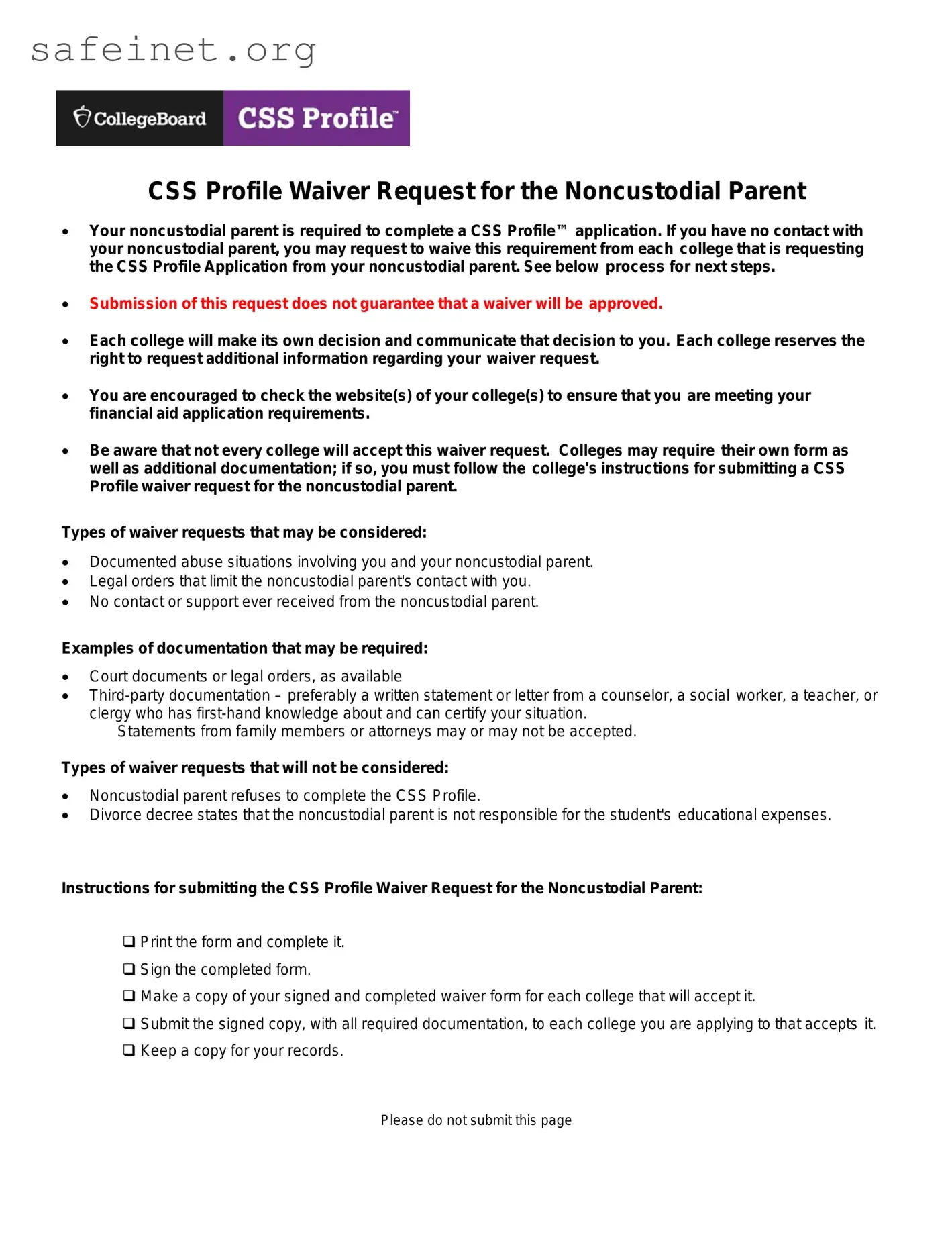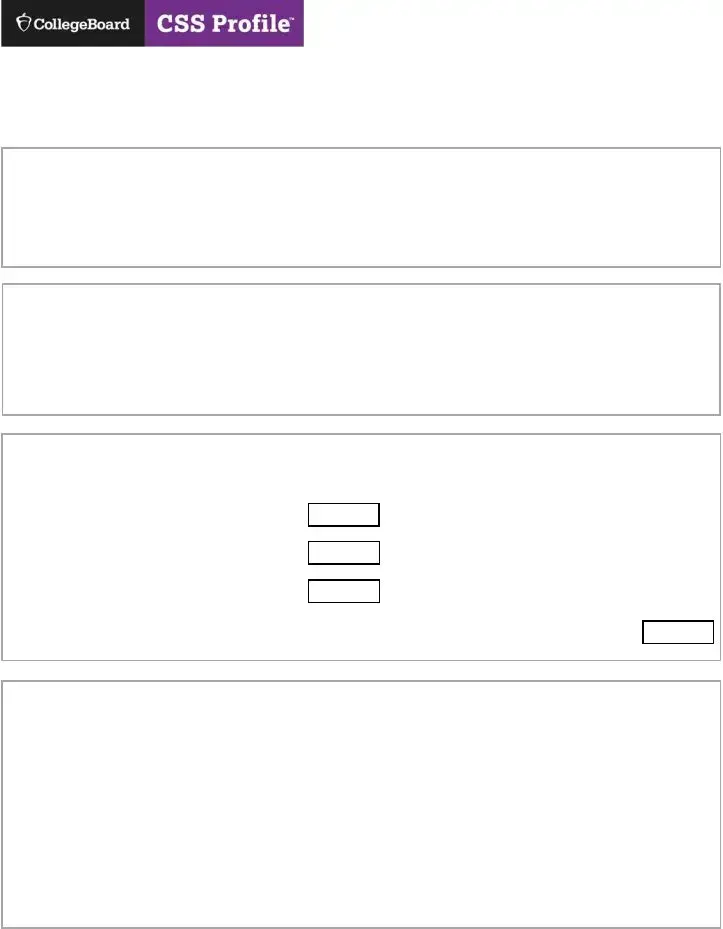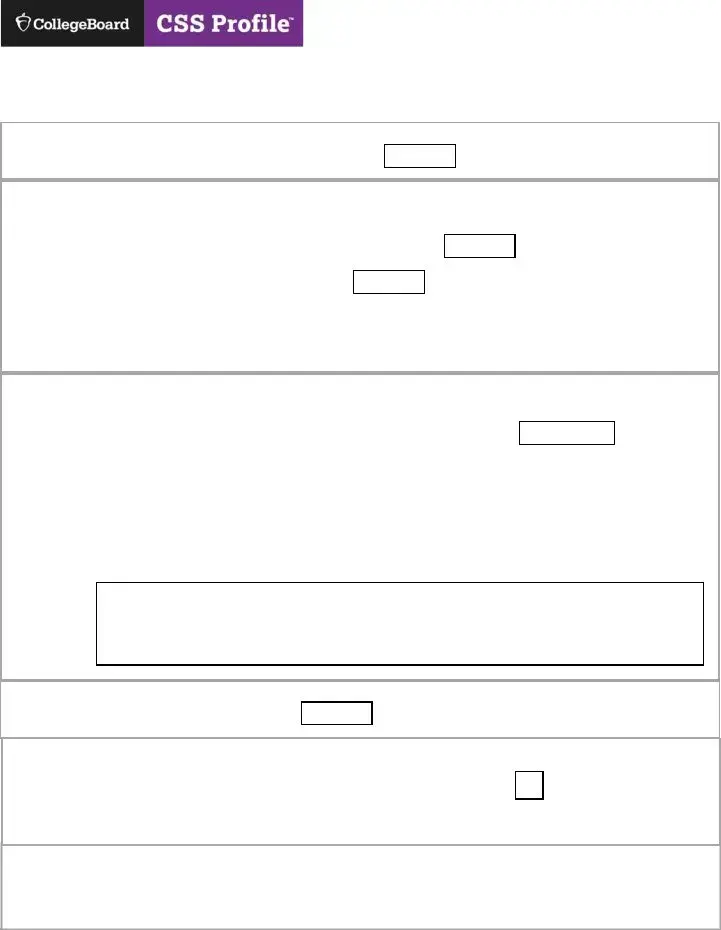CSS Profile Waiver Request for the Noncustodial Parent
Your noncustodial parent is required to complete a CSS Profile™ application. If you have no contact with your noncustodial parent, you may request to waive this requirement from each college that is requesting the CSS Profile Application from your noncustodial parent. See below process for next steps.
Submission of this request does not guarantee that a waiver will be approved.
Each college will make its own decision and communicate that decision to you. Each college reserves the right to request additional information regarding your waiver request.
You are encouraged to check the website(s) of your college(s) to ensure that you are meeting your financial aid application requirements.
Be aware that not every college will accept this waiver request. Colleges may require their own form as well as additional documentation; if so, you must follow the college's instructions for submitting a CSS Profile waiver request for the noncustodial parent.
Types of waiver requests that may be considered:
Documented abuse situations involving you and your noncustodial parent. Legal orders that limit the noncustodial parent's contact with you.
No contact or support ever received from the noncustodial parent.
Examples of documentation that may be required:
Court documents or legal orders, as available
Third-party documentation – preferably a written statement or letter from a counselor, a social worker, a teacher, or clergy who has first-hand knowledge about and can certify your situation.
Statements from family members or attorneys may or may not be accepted.
Types of waiver requests that will not be considered:
Noncustodial parent refuses to complete the CSS Profile.
Divorce decree states that the noncustodial parent is not responsible for the student's educational expenses.
Instructions for submitting the CSS Profile Waiver Request for the Noncustodial Parent:
Print the form and complete it.
Sign the completed form.
Make a copy of your signed and completed waiver form for each college that will accept it.
Submit the signed copy, with all required documentation, to each college you are applying to that accepts it.
Keep a copy for your records.




